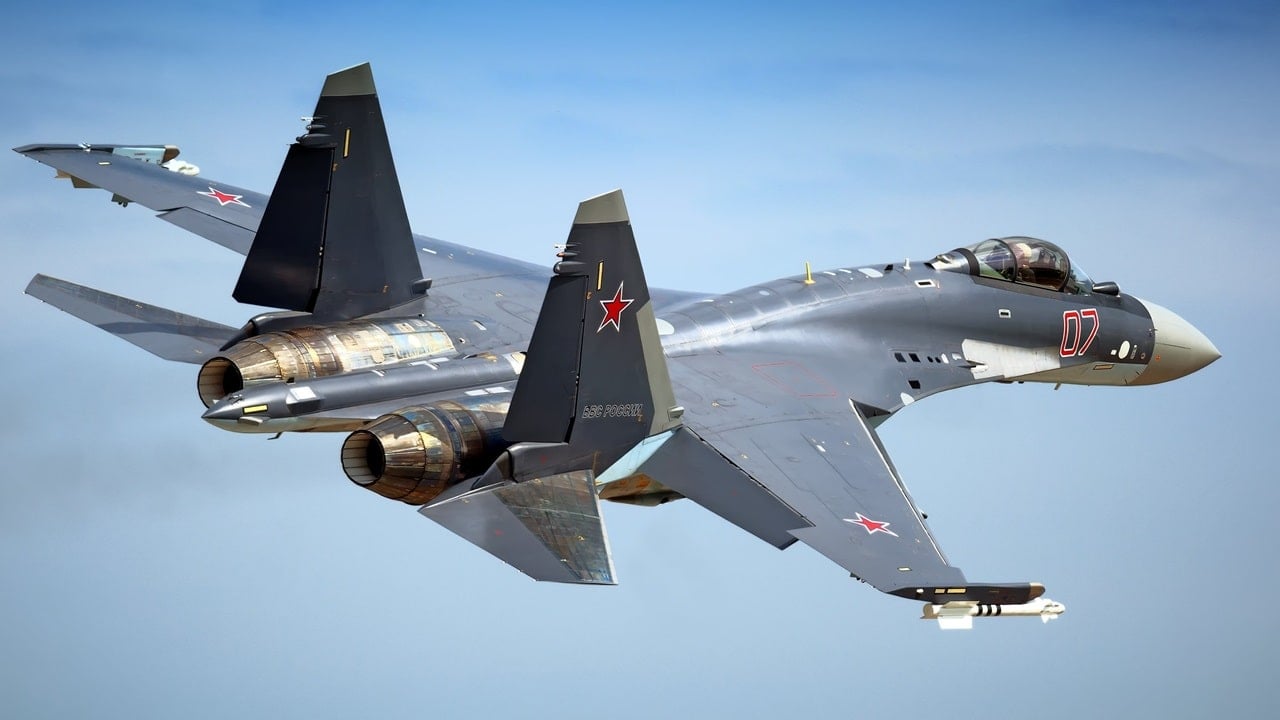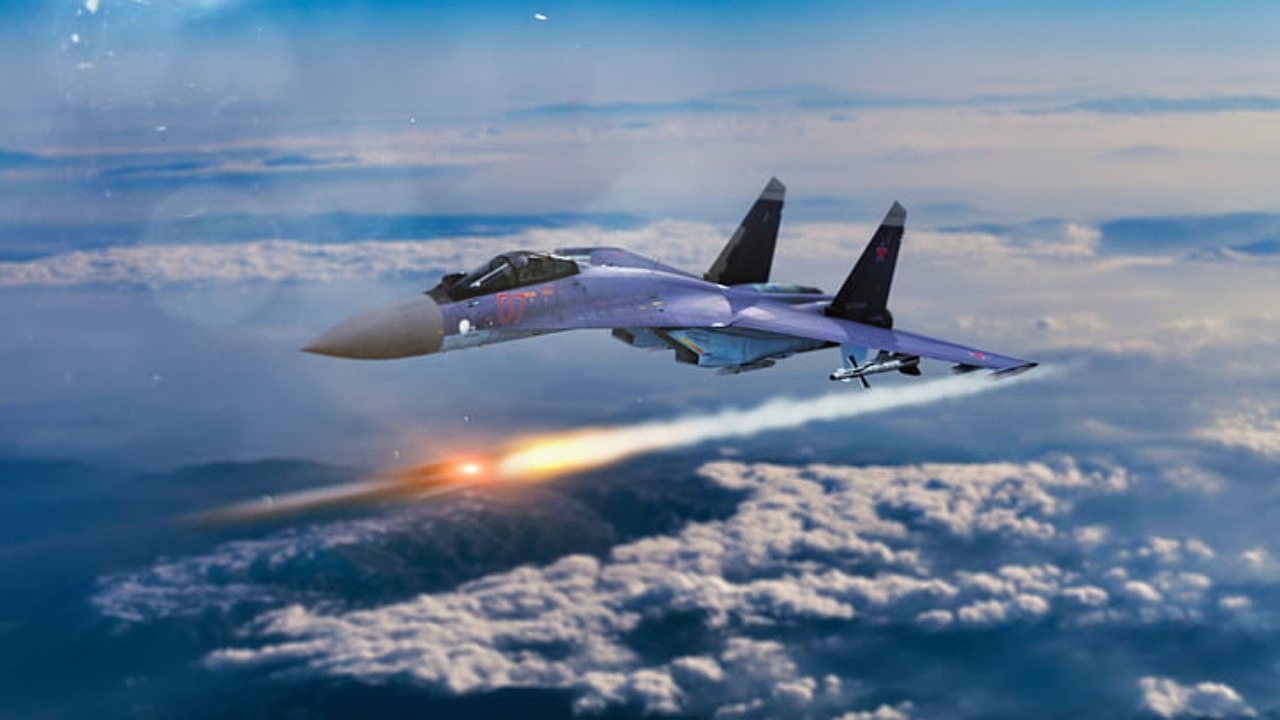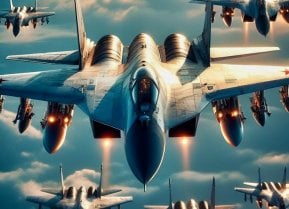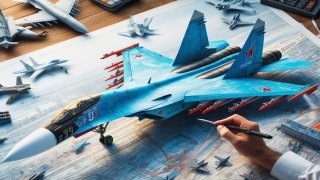Su-35: Why NATO Fears This Russian Fighter Plane
The superiority of the Su-35 relative to Ukrainian aircraft is part of why the Ukrainians have pushed their Western allies for Western fighters like the F-16.
Meet the Su-35: Putin’s incursion into Ukraine has renewed interest in Russia’s military technology. While Russia is not the threat to U.S. interests that the Soviet Union once was, Russian military technology does garner a certain amount of respect from Western observers. And one realm where the Soviets, and now Russians, have always been superlative, is the realm of aerospace design. It wasn’t happenstance that led the Soviet Union to beat America to almost every significant milestone in the Space Race (sans landing on the Moon). Soviet success was earned – and an outgrowth of a robust and sophisticated aerospace industry.
Times have changed, however. Americans have comfortably pulled ahead of the Russians as far as quality and quantity of aerospace output. And Russia is no longer America’s primary aerospace competitor – that distinction belongs to China, which has revisionist designs on the Indo-Pacific, and has already fielded over two hundred Chengdu J-20 fighters, a fifth-generation aircraft. But Russia still has a capable fleet of fighter aircraft – certainly sufficient to give America pause.
And one of the foundational pieces of the Russian fighter fleet is the Sukhoi Su-35.
Su-35: A Derivative Of A Familiar Airframe
The Su-35 is a derivative of the Su-27. The Su-27 debuted in 1977, back when the Soviets and Americans were engaged in an arms race, and when the two nations’ aerospace development corresponded with one another in a tit-for-tat manner. The Su-27 was, visibly, a direct answer for the U.S.’s newly unveiled, large, fourth-generation fighters – the F-14 and the F-15. Both the F-14 and the F-15 were twin-engine, highly maneuverable aircraft capable of trucking heavy ordnance over long distances, while outfitted with sophisticated avionics. The original variant Su-27, like the F-15, was designed for air superiority missions – before later variants were modified to accommodate a wider mission profile.
The Su-27 entered service in 1985 and was used for two main purposes: one, long-range air defense against American bombers like the brand-new B-1B and the already-decades-old B-52, and two, long-range escort for Soviet bombers like the Tu-95 and Tu-160.
The Su-27 would spawn various progeny. The Su-30 is a two-seat, multirole fighter developed from the Su-27; the Su-33 is a carrier-based offspring of the Su-27; The Su-34, another Su-27 derivative, features two seats, side-by-side, and is used in a fighter-bomber role; a thrust-vectoring version of the Su-27 was developed – the Su-37; and of course, the Su-27 gave rise to the Su-35.
A Modern Fighter
The Su-35 features the N035 Irbis-E “Snow Leopard” passive electronically scanned array (PESA) radar. The N035 is an improved version of the N011M radar and can detect an aerial target up to 250 miles away. The N035 can track up to thirty aerial targets simultaneously and can engage eight aerial targets simultaneously. The N035 is also capable of providing the pilot with high-resolution ground images with synthetic aperture mode (synthetic aperture mode is a form of radar that can create two-dimensional images or three-dimensional reconstructions of objects, i.e. a mountain range below).
To supplement the N035, the Su-35 is outfitted with an OLS-35 optoelectronic targeting system, located forward of the cockpit, to provide infra-red search and track. For defense, the Su-35 relies on the L175M Khibiny-M electronic countermeasures system. To reduce the Su-35’s radar cross-section, the jet is outfitted with radar-absorbent materials on the engine inlets and on the front stages of the engine compressor. The result is a radar cross-section that has been halved. Still, the Su-35 is not a stealth aircraft, not like the F-22 or F-35.
The Su-35 is outfitted with two Saturn AL-41F1S turbofan engines. Like the F-22 and F-35, the Su-35’s Saturn engines are equipped with thrust vectoring nozzles, which allow for supermaneuverability. As Sukhoi’s chief test pilot, Sergey Bogdan, explains: “The classical air combat starts at high speed, but if you miss on the first shot – and the probability is there because there are maneuvers to avoid missiles – the combat will be more prolonged. After maneuvering the aircraft, will be at a lower speed, but both aircraft may be in a position where they cannot shoot. But supermaneuverability allows an aircraft to run within three seconds and take another shot.”
The Su-35’s supermaneuverability allows the aircraft to perform post-stall maneuvers at low speeds – which differs markedly from the Western air combat maneuvering philosophy, which emphasizes the retention of an aircraft's kinetic energy.

Su-35 Over Ukraine
The Su-35 has been deployed over the skies of Ukraine. Performing air superiority missions, the Su-35 has recorded at least seven air-to-air victories against Ukrainian jet aircraft (and one against a Ukrainian Mil Mi-14 helicopter). Multiple Su-35s are known to have been shot down over Ukraine. Two of the downed Su-35s fell to friendly fire, from Russian S-300 surface-to-air missiles.

The superiority of the Su-35 relative to Ukrainian aircraft is part of why the Ukrainians have pushed their Western allies for Western fighters like the F-16.
About the Author
Harrison Kass is a prolific defense writer with over 1,000 articles published. An attorney, pilot, guitarist, and minor pro hockey player, Harrison joined the US Air Force as a Pilot Trainee but was medically discharged. Harrison holds a BA from Lake Forest College, a JD from the University of Oregon, and an MA from New York University. Harrison listens to Dokken.
Main image is Creative Commons. Intext images are from Shutterstock.


